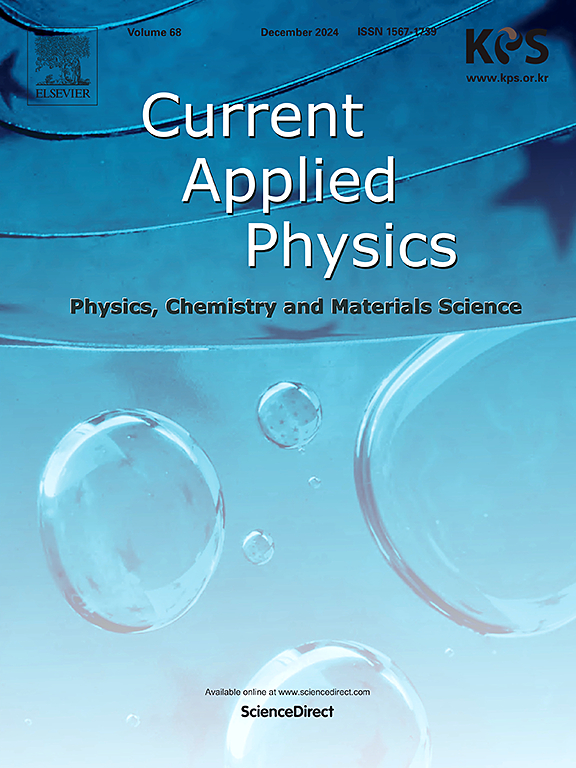超宽带低压工作的预扭混合LC偏振旋转器
IF 3.1
4区 物理与天体物理
Q3 MATERIALS SCIENCE, MULTIDISCIPLINARY
引用次数: 0
摘要
我们报道了一种基于混合排列向列(HAN)液晶电池的超宽带和电压可调偏振旋转器,该液晶电池具有故意的预扭曲结构。通过在平面和垂直对准层之间采用约130°的摩擦角,即使在没有外场的情况下,也可以形成约30°的初始扭转角。施加垂直电场使LC分子的极性角逐渐降低,同时保持其方位角扭转,从而增加其对极化旋转的贡献。该结构实现了偏振矢量在200-2000 nm波长范围内从0°到90°的连续旋转,线性偏振度(DoLP)超过0.9。与以前的方法相比,该设计在明显较低的驱动电压(~ 10 V)下工作,并且消除了对图案电极的需求,增强了其与大面积和低成本制造的兼容性。光响应得到了指向性模拟和琼斯矩阵计算的支持,突出了其宽带和可调谐偏振控制的物理机制。本文章由计算机程序翻译,如有差异,请以英文原文为准。

Pre-twisted hybrid LC polarization rotator with ultra-broadband and low-voltage operation
We report an ultra-broadband and voltage-tunable polarization rotator based on a hybrid aligned nematic (HAN) liquid crystal cell with an intentional pre-twisted configuration. By employing a rubbing angle of ∼130° between the planar and vertical alignment layers, an initial twist angle of ∼30° is formed even in the absence of an external field. Applying a vertical electric field gradually lowers the polar angle of the LC molecules while preserving their azimuthal twist, thereby increasing their contribution to polarization rotation. The proposed structure achieves a continuous rotation of the polarization vector from 0° to 90° over a wavelength range of 200–2000 nm with a degree of linear polarization (DoLP) exceeding 0.9. Compared with previous approaches, this design operates at a significantly lower driving voltage (∼10 V) and eliminates the need for patterned electrodes, enhancing its compatibility with large-area and low-cost fabrication. The optical response is supported by director simulations and Jones matrix calculations, highlighting the physical mechanisms underlying its broadband and tunable polarization control.
求助全文
通过发布文献求助,成功后即可免费获取论文全文。
去求助
来源期刊

Current Applied Physics
物理-材料科学:综合
CiteScore
4.80
自引率
0.00%
发文量
213
审稿时长
33 days
期刊介绍:
Current Applied Physics (Curr. Appl. Phys.) is a monthly published international journal covering all the fields of applied science investigating the physics of the advanced materials for future applications.
Other areas covered: Experimental and theoretical aspects of advanced materials and devices dealing with synthesis or structural chemistry, physical and electronic properties, photonics, engineering applications, and uniquely pertinent measurement or analytical techniques.
Current Applied Physics, published since 2001, covers physics, chemistry and materials science, including bio-materials, with their engineering aspects. It is a truly interdisciplinary journal opening a forum for scientists of all related fields, a unique point of the journal discriminating it from other worldwide and/or Pacific Rim applied physics journals.
Regular research papers, letters and review articles with contents meeting the scope of the journal will be considered for publication after peer review.
The Journal is owned by the Korean Physical Society.
 求助内容:
求助内容: 应助结果提醒方式:
应助结果提醒方式:


